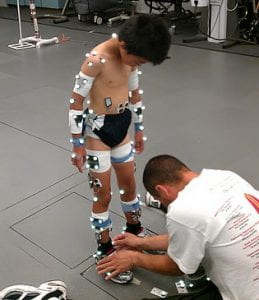 The ability to respond to dynamic challenges to postural equilibrium during running tasks underlies many skills needed for successful participation in childhood activities as it enables individuals to appropriately change direction and speed in response to task demands. An understanding of the processes that constrain and drive acquisition of postural strategies needed for participation in physical activity can inform the creation of interventions aimed at facilitating the acquisition of mature movement patterns. The current literature in this area is limited to the development of postural stra
The ability to respond to dynamic challenges to postural equilibrium during running tasks underlies many skills needed for successful participation in childhood activities as it enables individuals to appropriately change direction and speed in response to task demands. An understanding of the processes that constrain and drive acquisition of postural strategies needed for participation in physical activity can inform the creation of interventions aimed at facilitating the acquisition of mature movement patterns. The current literature in this area is limited to the development of postural stra tegies for balance, gait termination and obstacle avoidance and has not considered dynamic tasks needed for participation in physical activities.
tegies for balance, gait termination and obstacle avoidance and has not considered dynamic tasks needed for participation in physical activities.
These studies used a running gait termination paradigm to quantify differences in postural strategies in typically developing pre-pubertal children ages 7-12 and to compare these strategies to those employed by young adults. Three-dimensional motion analysis, force platforms and electromyography will be used to characterize the strategies individuals used to decelerate from a run. Strategies will be compared between children and to young adults (20-35yrs). Differences between groups highlighted the development of more mature postural strategies to control whole body momentum with age. This study expanded the body of work examining the maturation of postural strategies and data collected in a previous NIH study (#1R01HD046663-01).
Related publications:
Cesar GM, Lewthwaite R, Sigward SM. Effect of Practice on the Control of Whole-Body Momentum in Active Children and Adults. Journal of Motor Learning and Development. 6 (1) 185-196: 2018
Cesar GM and Sigward SM. Predictors for Dynamic Stability during Running Gait Termination: A comparison between adults and children. Human Movement Science, 48:37-43, 2016
Cesar GM, Sigward SM. Dynamic stability during running gait termination: Differences in strategies between children and adults to control forward momentum. Human Movement Science, 43:138-145, 2015
Funding: Zumberge Fund Individual Grant ($27,000); North American Society for Psychology of Sports and Physical Activity (NASPSPA) ($2,000)